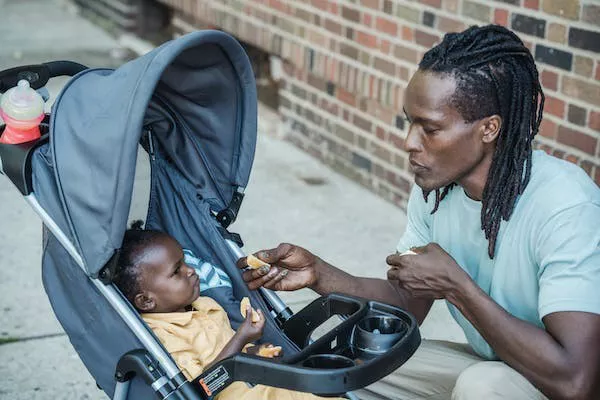A cradle is an essential piece of furniture for newborns and infants, providing a cozy and secure sleeping space. It serves as a safe haven for your baby, offering numerous benefits for their comfort, development, and overall well-being. This article explores the importance of a cradle in creating a nurturing environment for your little one. By understanding the significance of a cradle, including its features, safety considerations, and the soothing effects it provides, parents can make informed decisions when choosing the right cradle for their baby.
Creating a Safe and Secure Sleeping Environment
One of the primary functions of a cradle is to create a safe and secure sleeping environment for your baby. Cradles are designed with high sides or barriers to prevent the baby from rolling out during sleep. These protective features offer parents peace of mind, knowing that their little one is safe and secure while resting or sleeping in the cradle. Additionally, cradles often come with a firm mattress or padding, providing a comfortable surface for your baby’s peaceful sleep.
Promoting Better Sleep Patterns
A cradle can significantly contribute to promoting better sleep patterns for your baby. The gentle rocking or swaying motion that many cradles offer mimics the soothing movements experienced in the womb. This motion helps lull babies to sleep and can assist in calming them during fussy periods or when they are having difficulty settling down. The rhythmic motion of a cradle has a soothing effect on babies, encouraging longer and more peaceful sleep, which is essential for their growth and development.
Supporting Infant Bonding and Attachment
The use of a cradle enhances bonding and attachment between parents and their baby. Placing the cradle in close proximity to the parents’ bed allows for easy access and monitoring during the night. The ability to observe and respond promptly to your baby’s needs strengthens the parent-child connection and promotes a sense of security and trust. Additionally, cradles often have an open design, allowing parents to interact and maintain eye contact with their baby, fostering emotional bonding and creating a nurturing environment.
Offering Portability and Convenience
Cradles are often designed to be lightweight and portable, allowing parents to easily move them from room to room. This portability provides convenience and flexibility, enabling parents to keep their baby close by throughout the day. Whether it’s having the cradle nearby in the living room while attending to household tasks or moving it to the nursery for a nap, the ability to transport the cradle ensures that your baby is always within reach. This convenience facilitates frequent and responsive caregiving, contributing to the baby’s overall well-being.
Transitioning from the Womb to the Crib
Cradles serve as an important transitional space for babies as they move from the comfort of the womb to the crib. The cozy and secure environment of a cradle helps ease the transition, providing a familiar and comforting sleeping space. This gradual shift allows babies to adjust to their new sleeping arrangements, promoting a smoother transition to a crib or a larger bed as they grow older.
Safety Considerations for Cradles
When choosing a cradle for your baby, it is crucial to prioritize safety considerations. Look for a cradle that meets the recommended safety standards, with sturdy construction and secure fastenings. Ensure that the mattress fits snugly within the cradle to prevent gaps where the baby’s limbs could get stuck. It is also essential to place the cradle on a stable surface, away from any potential hazards or sources of instability. Regularly inspect the cradle for any wear and tear, and follow the manufacturer’s guidelines for weight limits and usage recommendations.
Time to Transition to a Crib
While a cradle is a valuable asset during the early months, it is important to recognize when it is time to transition your baby to a crib. As your baby grows and becomes more active, they may outgrow the size and weight limits of the cradle. Additionally, if your baby can sit up, pull up, or roll over independently, it may be safer to transition to a crib. Assess your baby’s developmental milestones and consult with your pediatrician or healthcare provider to determine the appropriate timing for the transition.
Conclusion
A cradle plays a vital role in providing a safe, comfortable, and secure sleeping space for your baby. Its ability to create a nurturing environment, promote better sleep patterns, support bonding and attachment, and aid in the transition from the womb to the crib makes it an essential piece of furniture for parents. By understanding the importance of a cradle and prioritizing safety considerations, parents can make informed decisions when selecting a cradle that meets their baby’s needs. While a cradle serves as a valuable sleeping space during the early months, it is important to recognize when it is time to transition to a crib as your baby grows. Ultimately, the use of a cradle can contribute to your baby’s well-being, providing a cozy and secure space for them to rest and sleep soundly.


